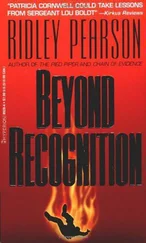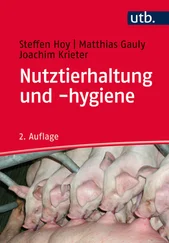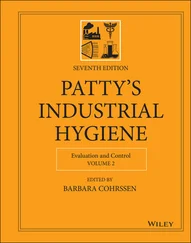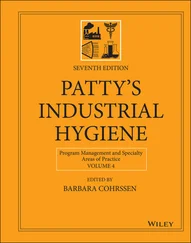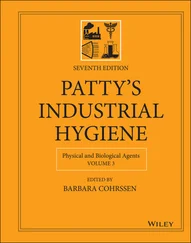The RLBMS is, therefore, the nexus of the participatory approach toward workplace risk management and risk communication, where EHS discipline expertise and collective worker input meet. Building an effective corporation requires this comprehensive feedback approach as it tears down existing preconceptions, rules, and institutional customs in order to build a more effective and functional EORM system (51, 52). EHS field practitioners have an innate understanding of the workforce that is necessary to identify existing practices and organizational structures to determine the correct organizational direction. EHS disciplines are also in an appropriate position to promote a positive course for management to enhance their organization. Conversely, with a lack of productivity and profitability identified in an existing EORM system, EHS disciplines must also identify these weaknesses to ensure the negative organizational direction does not persist. Participatory methods in the collective redefining and rebuilding of an EHS organizational structure has been shown to achieve the risk communication necessary to receive the buy‐in of managers and workers alike, as this approach assists in achieving a collective vision of the ideals, objectives, and goals of a successful, organizationally‐specific, EORM.
6.2 Turning Risk Knowledge into Action
The premise of participatory EHS is that workers know their workplace better than anyone else. With a mutual sharing of information by workers and their EHS staff, an elevated knowledge of workplace risk is created that allows them to develop a more comprehensive approach to their daily tasks. The amount of control that workers are given over their workplace is an important element, as well as a potential limitation, for the effectiveness of the participatory process. By definition, managers have a level of control over their workplace that is not available to the workers. Without an appropriate incentive, management is not usually willing to truly empower workers to determine their own solutions. In addition, a situation in which workers do not have a climate of trust between themselves and upper management can, in and of itself, add to their workplace risk factors (11, 53).
This problem exists as much in developed nations as in economically developing countries. Unfortunately, lack of worker empowerment is not consistent with the fact that workers are usually the ones who know their job and their peers well enough to identify and create solutions that will persist (54). However, management can be in a position to give a certain level of control to the workers when their production costs increase due to workplace incidents, accidents, and regulatory fines. These increased costs can often be related to decreased working efficiency, employee turnover rates, absenteeism, medical care, and worker's compensation . Participatory EHS and the RLBMS strategy present a synergistic opportunity for the process to be implemented in a manner that significantly increases workplace risk knowledge and offers an opportunity to improve working efficiency and employee satisfaction that can reduce issues relating to production costs. Therefore, both management and workers have a vested interest to translate this risk knowledge into action that is geared toward achieving these objectives. In addition, should management need to bring a request for additional to accomplish these objectives to the corporate board of directors, it is good to know that they also use comparable risk matrices to derive levels of risk as part of a standard board room language.
6.3 Risk Communication for EHS Results
The simplified risk communication language provided by RLBMS and its framework brings together the roles and responsibilities of workers and expertise of EHS field practitioners to create a comprehensive EORM that is built with a bottom‐up approach. EHS staff become an essential part of translating this knowledge into action in not just raising the consistent issues facing them over the years but also presenting an integrated component in developing solutions that are positive for everyone involved. Through this process, the RLBMS provides a comprehensive knowledge approach to workplace risk management that can be compiled and sold to upper management as a benefit to operations and a cost‐effective approach for highly stressed and shrinking EHS resources. In implementing the participatory approach, EHS staff meet with their workforce and begin by exchanging their knowledge on the most commonly performed tasks and their related risks.
Teams of affected workers, EHS staff, and management representatives then meet to further develop this approach. With the RLBMS and its derived procedures identified and tasks isolated, the workers then take the lead in communicating to management how these tasks should be performed to reduce work‐related risks. For the more commonly performed activities, primarily as RL1 and RL2 tasks with some RL3 examples mixed in, the teamwork of EHS staff and workers can be shown in the aligning of hazard‐to‐control designations for tasks and assigned RLs based on the depth and integrity of supporting data. Management involvement in this process is best optimized when it is limited to assuring final product quality and understanding the needs and expectations of their workers on a first‐hand basis. Once agreements for management support and dedication of resources are reached, the next steps should be the documentation of the approach, training, and procedural requirements to maintain this system over time. Risk communication and knowledge building needs to involve employees, EHS staff, and management working together toward optimizing EORM programs to maximize EHS resources and capabilities. This strategy provides a comprehensive risk communication language and a process that is invaluable for receiving worker buy‐in and achieving program implementation in the short term. It can also help in attaining the elusive long term goal of EHS staff everywhere; the retention of program expectations amongst workplace peers for many years to come (11).
Thanks go to the Exposure and Control Banding Committee of the American Industrial Hygiene Association, and Control Bandits everywhere, for continually stretching the boundaries of how Control Banding applications can be maximized professionally. Appreciation is also given to the dedicated volunteers of Workplace Health Without Borders (WHWB), both international and WHWB‐UK, that have encouraged and championed the power of Control Banding to provide risk communication around the world. This work, in part, was performed under the auspices of the US Department of Energy by Lawrence Livermore National Laboratory under Contract DE‐AC52‐07NA27344, LLNL‐BOOK‐795518.
Control Banding Resources, https://controlbanding.llnl.gov
COSHH Essential Technical Basis http://www.coshh-essentials.org.uk/assets/live/CETB.pdf
ILO Chemical Control Toolkit, https://www.ilo.org/legacy/english/protection/safework/ctrl_banding/toolkit/main_guide.pdf
GHS Purple Book (Revision 5), https://www.unece.org/trans/danger/publi/ghs/ghs_rev05/05files_e.html
GHS Purple Book (Revision 7), https://www.unece.org/trans/danger/publi/ghs/ghs_rev07/07files_e.html
Summary of Hazard Bands based on combining ILO Chemical Control Toolkit and COSHH Essentials e‐Tools, https://www.chemscape.com/sites/default/files/inline-files/Hazard_Band_Handout_2018.pdf
Summary of relationship between GHS Classification and Hazard Statements based on GHS Purple Book Revision 5, https://www.chemscape.com/themes/chemscape/pdf/ghs-classification-hp-statements_v2.pdf
1 1 Hayakawa, H., Fischbeck, P.S., and Fischhoff, B. (2000). Traffic accident statistics and risk perceptions in Japan and the United States. Accid Anal Prev 32 (6): 827–835.
Читать дальше


